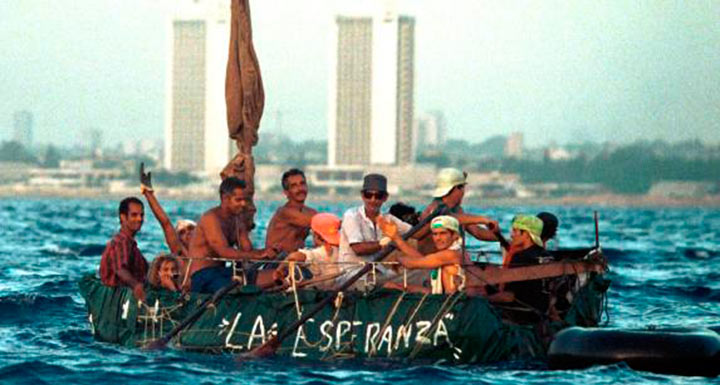
Voices: Different migrants treated differently
MIAMI — I spent some time recently at a symposium commemorating the 20th anniversary of the Cuban rafter crisis that brought 35,000 desperate migrants to America’s shores.
Held at my alma mater, Florida International University, the symposium featured stirring pictures of Cubans who boarded boats, inner tubes and anything else that could float to cross the shark-infested waters between Cuba and Florida in 1994. The university’s art museum was putting the finishing touches on an exhibition of paintings made by some of the balseros who survived the harrowing journey.
After a year of negotiations when many of the Cubans were held in a sprawling tent city at the Navy base in Guantanamo Bay, the panelists talked about the welcome mat that was eventually laid out for them once they reached the U.S. mainland. Government officials fast-tracked their asylum applications, social workers helped locate sponsors around the country, non-profits helped them register for federal aid.
I was fascinated by the presentation but couldn’t stop asking myself one question: Why is the current wave of Central American children braving equally perilous journeys to reach the U.S. facing such a different reaction?
When the Cubans landed on U.S. shores, there were no protests in Michigan or California calling for the government to ship them back home, as we’ve seen in recent weeks in response to the immigrant children. There were no armed militias patrolling South Florida’s shoreline trying to prevent them from entering, as we’ve seen along the Arizona border. Washington wasn’t debating changing the law to speed up their deportations.
So what’s the difference?
Siro del Castillo, one of the symposium panelists who was contracted by the U.S. government to help organize the refugee camp in Guantanamo Bay, said the answer is as old as America itself: Each new wave of immigrants has faced resistance from people who had immigrated to the country just years before.
“The Catholics who were discriminated against when they got here later discriminated against the Jews,” he said. “Italians discriminated against other Italians who came later.”
Jorge Duany, director of FIU’s Cuban Research Institute, said the answer is more political. Because the Central American children are fleeing the same violence and economic hardships that so many other countries experience, he argued, Americans don’t feel the need to afford them any special privileges like they do to Cubans fleeing a repressive government.
“They are not coming from a communist country or a country that’s considered terrorist by U.S. standards,” he said.
Holly Ackerman, a Duke University librarian who studies migration from Latin America, said the answer is far simpler.
“I think it’s just racism,” she said.
Cubans generally tend to be more fair-skinned than many of their Latin American counterparts. To illustrate how powerful that distinction is, Ackerman pointed to Cuba’s Caribbean neighbor – Haiti.
Haitians have faced horrific experiences over the decades, from oppressive dictators to the chaotic and violent fall of those dictators, from destabilizing U.S. interventions to some of the worst poverty in this hemisphere, from hurricanes to earthquakes. Yet every time a group of Haitians crams into a rickety boat and takes to sea in hopes of reaching America, U.S. Coast Guard boats have been quick to intercept them and send them back.
“There’s a sort of fundamental terror as far as Haitians,” she said. “But it doesn’t have anything to do with whether they’re economic or political (refugees). It has to do with their color.”
She sees a similar situation playing out with the rush of Central American children crossing the nation’s Southwest border, and she says the reason is as simple as their brown skin.
“It’s some very deep thing as far as racist beliefs about who’s worthy (to come to America) and who isn’t,” she said.
The flow of Central American children caught crossing the border slowed in August, down to 3,100 from a peak of 10,000 in June. If that flows picks up after the summer heat passes and the passage through Mexico becomes more manageable, that rush will be back in the headlines. And I’ll keep asking myself the same question.
(From the: USA Today)

